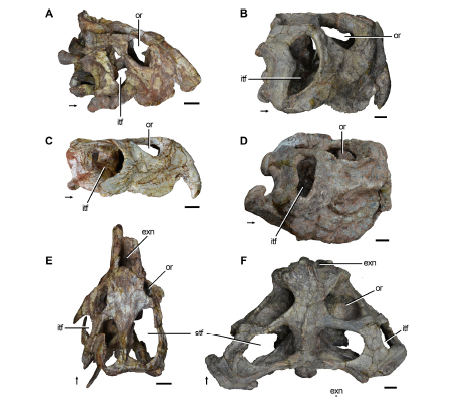ontologyのTwitterイラスト検索結果。 1,854 件中 54ページ目
Hi #STEMartists ! I'm a dietetics student who loves to learn about paleontology, medicine and microbiology in free time~
End-Permian Extinction Triggered Switch to Warm-Bloodedness
https://t.co/edeEqTifIk
#paleontology #science
Another post of today. Here I would like to talk about a member of the only extinct lineage of marine mammals (Desmostylia). Meet Neoparadoxia from the Miocene of North America, like most of its relatives it might have been fully aquatic.
https://t.co/DCokTld5MD
#paleontology
Quetzalcoatlus northropi. Gigantesco pterosaurio azdárquido del Cretácico superior con una envergadura de unos 11 metros y más de 200 kilos de peso. Se llamó así en honor al dios azteca Quetzalcóatl.
#paleoart #paleoartist #paleontology #scientificillustration #painting #drawing
Small Pterosaur from Mid-Cretaceous Period Had Adaptations for Sediment Probing
https://t.co/bmnG46nMLB
#paleontology #science
This is my own Disney Princess I made up. Her name is Sapia.
#dinosaurs #velociraptor #Disney #DisneyPlus #Frozen #cavegirls #disneyprincess #paleontology #paleoart #JurassicPark #jurassicworldfallenkingdom
Here's my own little take on designing a Victorian-styled Therizinosaurus, based off of the spiny-tailed iguana.
#dinosaurs #theropods #paleoart #Paleontology #prehistoric #kaiju #VictorianStyle #therizinosaurus #cretaceous
There once existed a Palaeomerycid (extinct family of ruminants closely related to Giraffids) named after one of the most iconic Star Wars characters, Padme Amidala. Meet Xenokeryx amidalae, known from the Mid-Miocene of Spain.
#paleontology
Art credit (Nix illustrations)
Interested in the Triassic stem-archosaurs from South America? Check our recently published revision of the group. New information about rhynchosaurs, proterosuchids, proterochampsids, and other Triassic archosaur precursors! #FossilFriday #paleontology
https://t.co/CXtvb0bHng
R. cancellatum is easily the coolest Hallucigeniid, no contest. The spines are all that is known from it, but it lived far and wide around the same time interval as the Chengjiang biota. #Paleoart #Paleontology #SciArt
This week is the Society of Vertebrate Paleontology's annual meeting. This year it's virtual.
For Thinking Thursday, Penny will walk you through the research that she's presenting to the professional community.
#Science #Paleontology #ClimateChange
Felt the urge to show appreciation to yet another group of Afrotherians, the Sirenians (dugongs and manatees) . This time I present to you the earliest member of Sirenia, meet Prorastomus from the Early Eocene of Jamaica. Sirenian evolution is quite interesting
#paleontology
Since Hyraxes are very awesome. I present to you yet another extinct Pliohyracid. Meet Antilohyrax, a hyrax from the Late Eocene of Fayum, Egypt. A hyrax that resembled a gazelle, had tusks and a low metabolism for an animal its size. It was a cursorial browser.
#paleontology
By request - Indoraptor
#inktober #inktober2020 #inktobercanada #dinosaur #dinosaurs #paleontology #indoraptor #jurassicpark #jurassicworld
#Carcharodontosaurus pin preview #dinosaurs #paleoart #paleontology
Iranotherium morgani, an extinct genus of Rhino from the late Miocene, and a relative of Elasmotherium. The only known rhinoceros with rugosity on each zygomatic arch of the male individual. As evident in this individual from the Late miocene of Linxia basin.
#paleontology







































